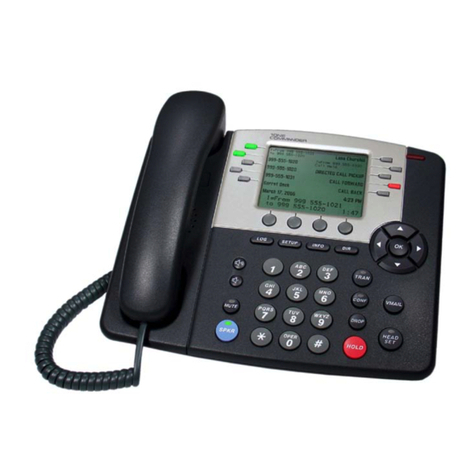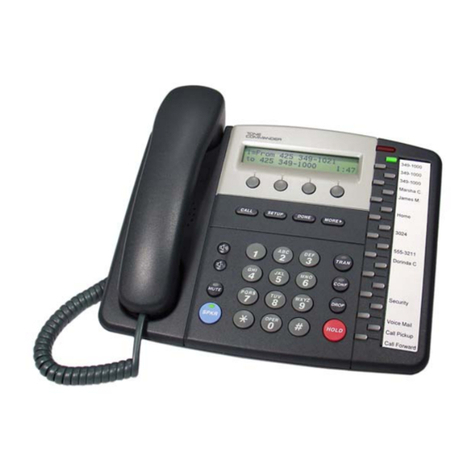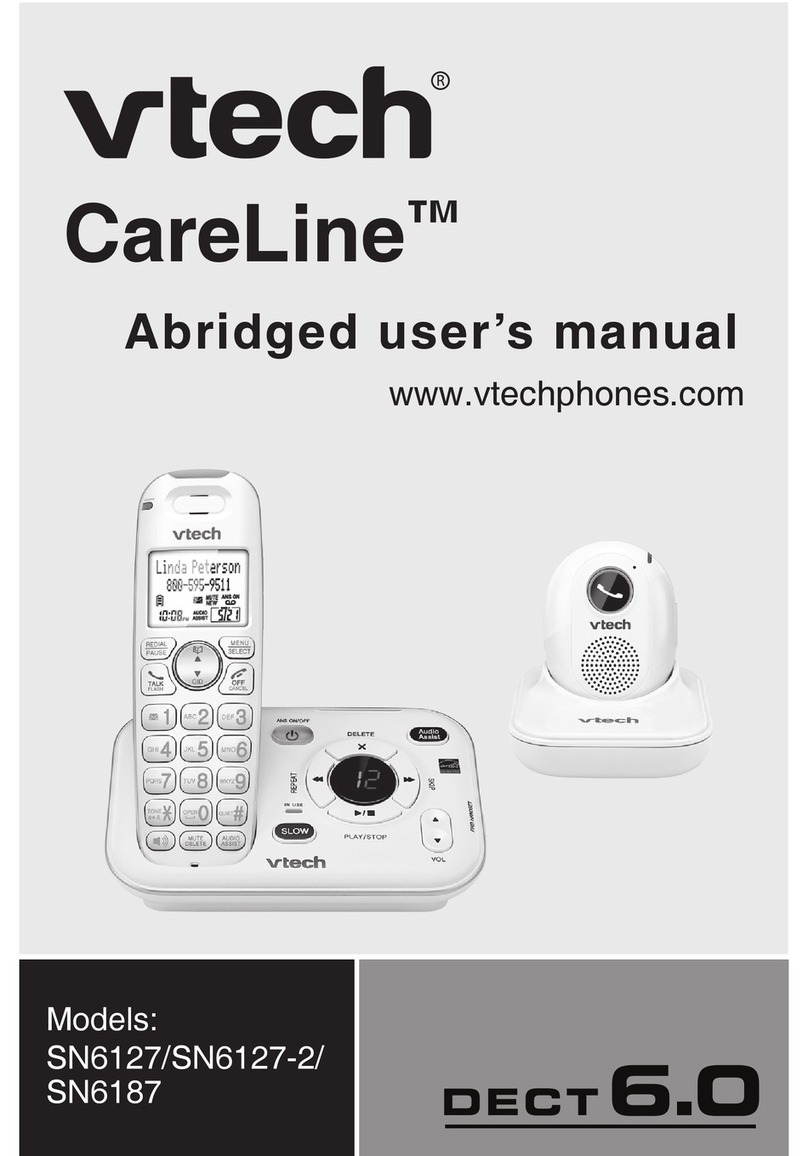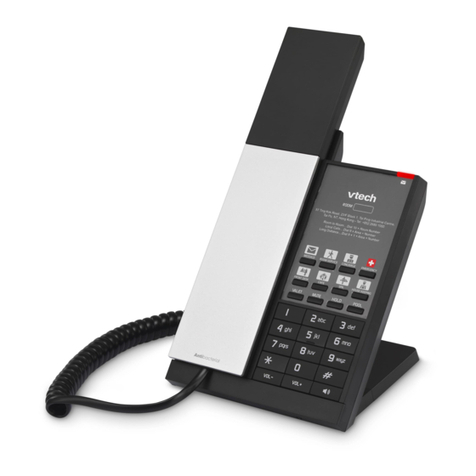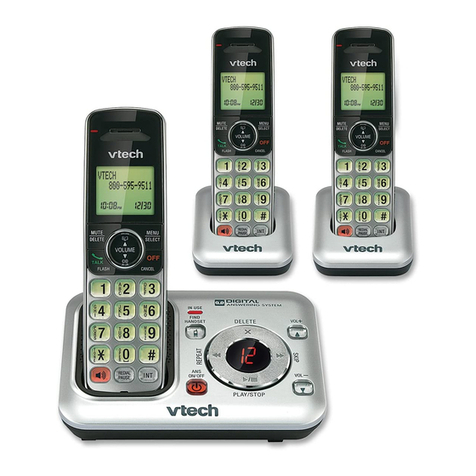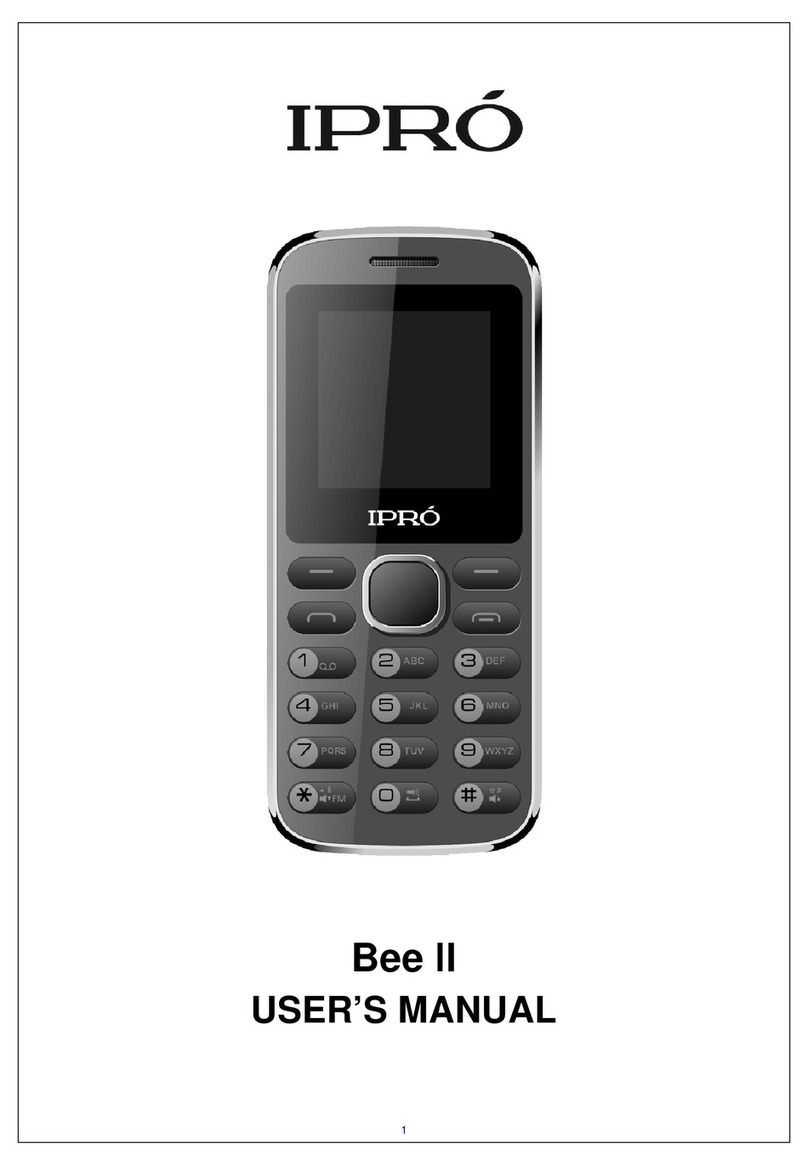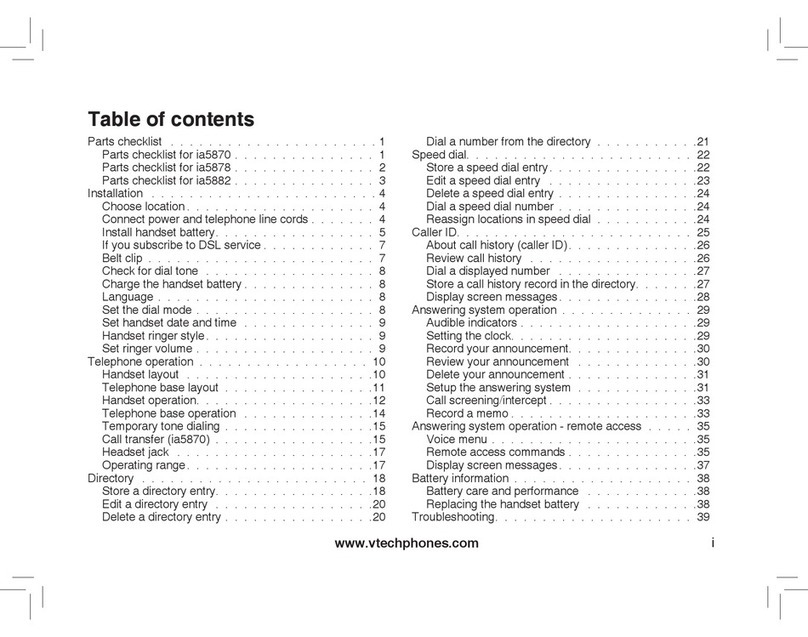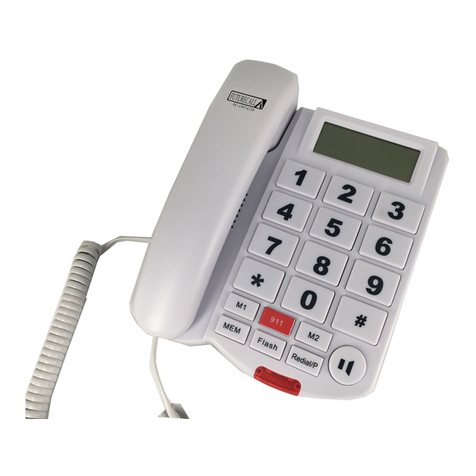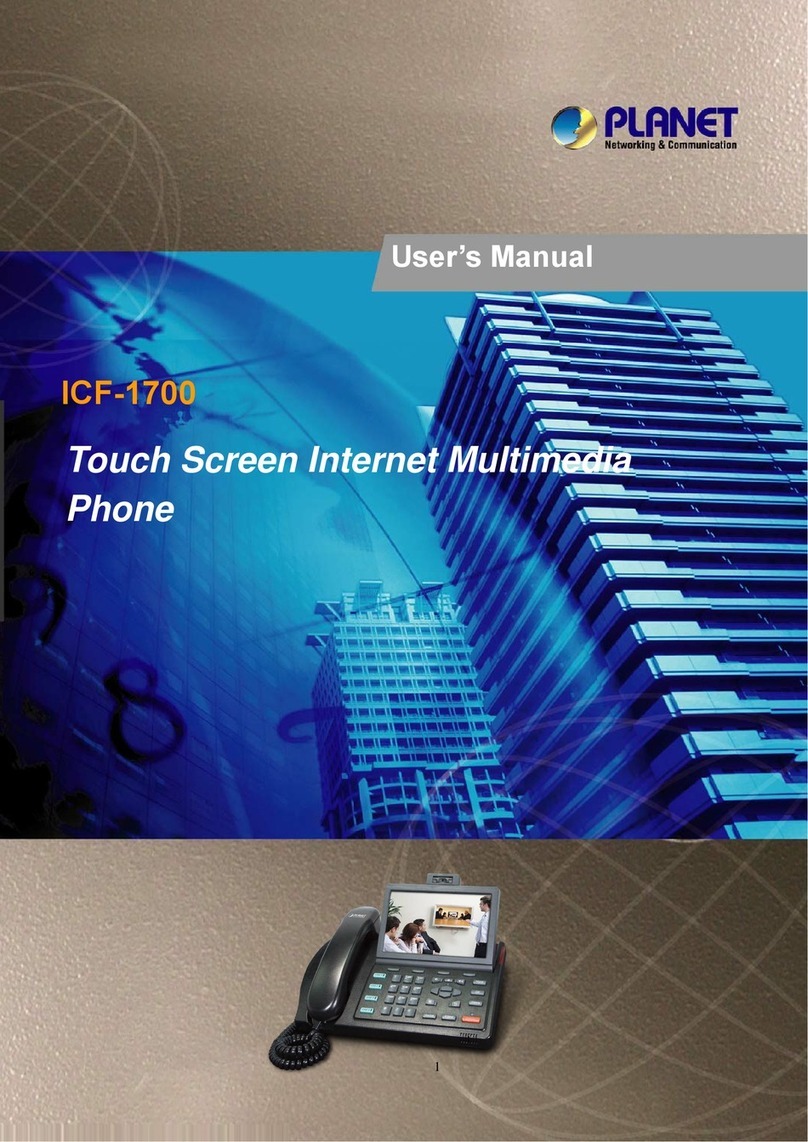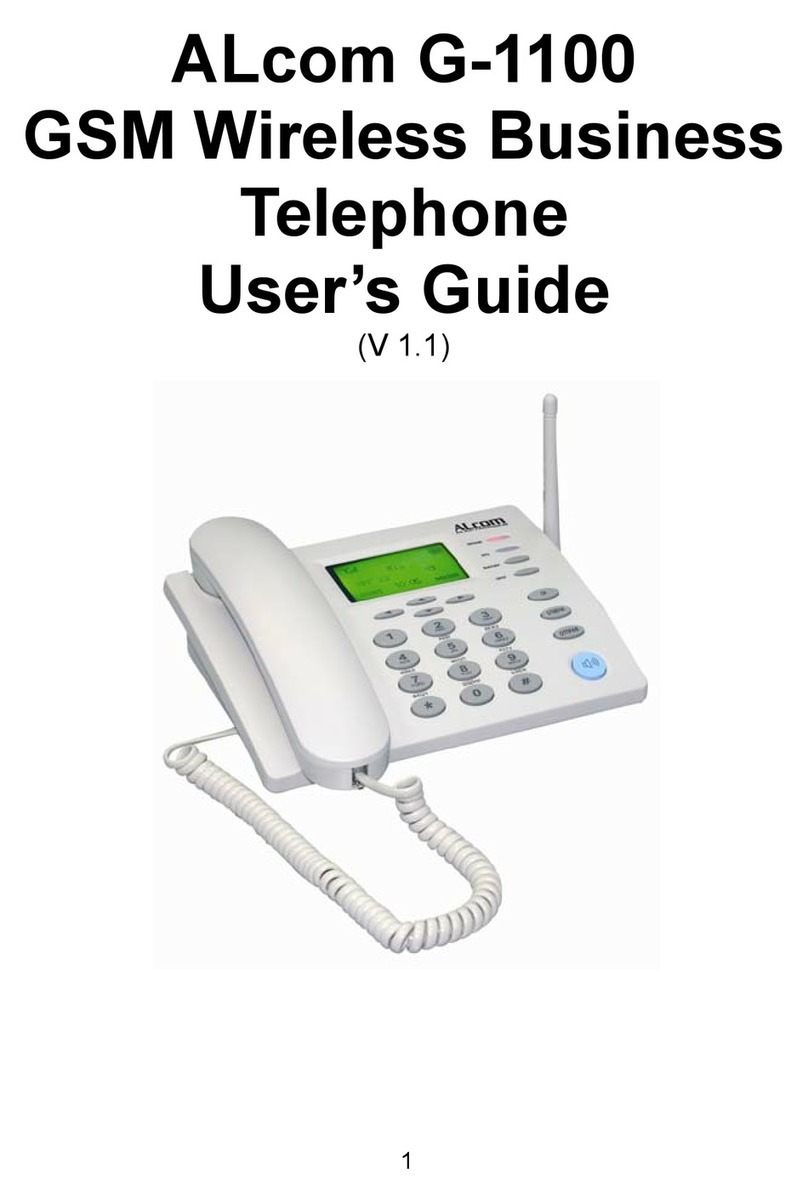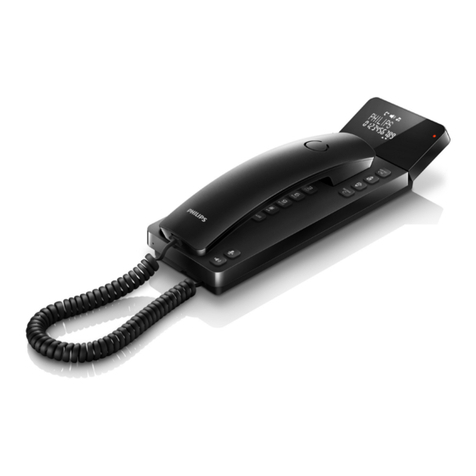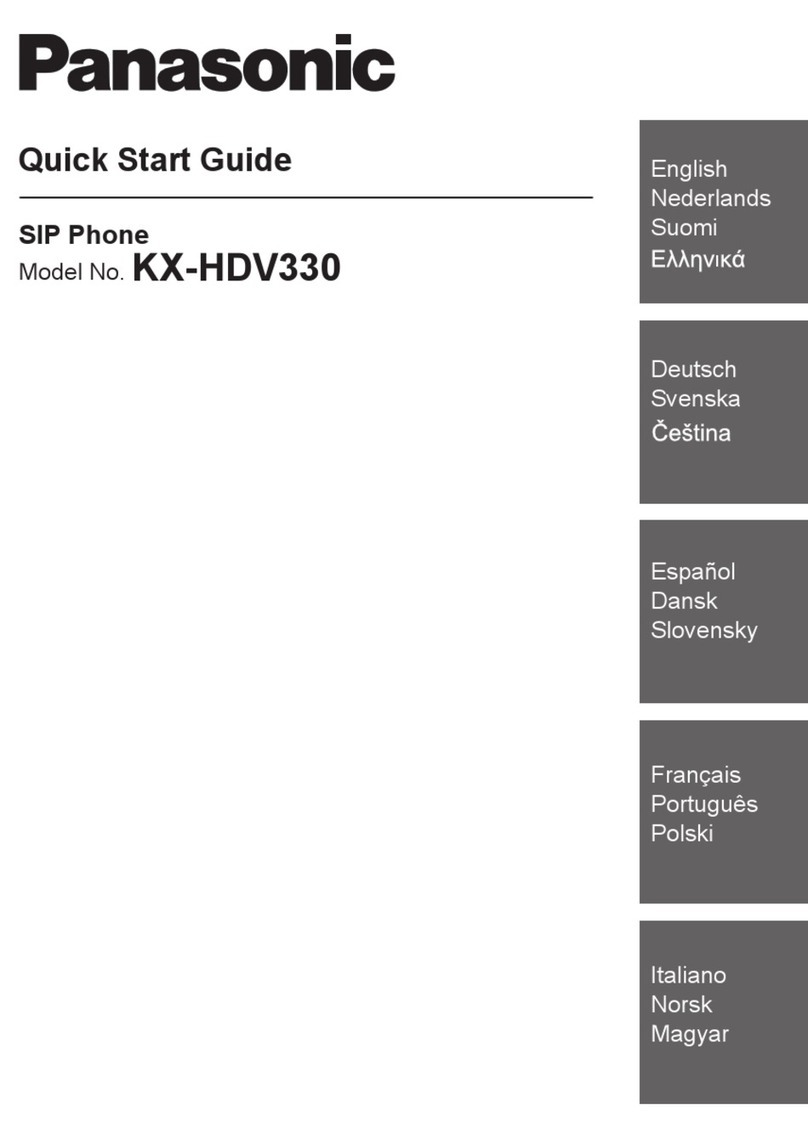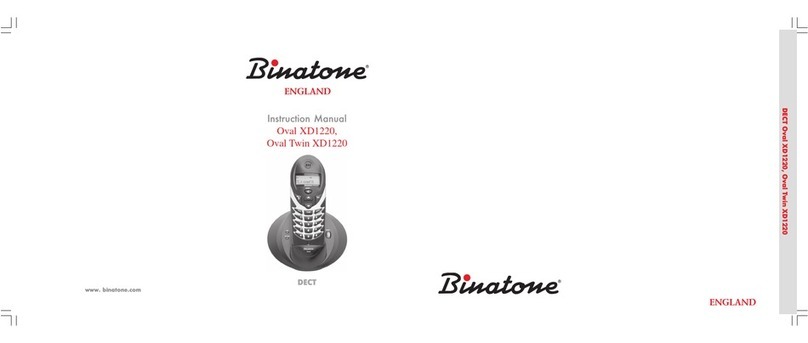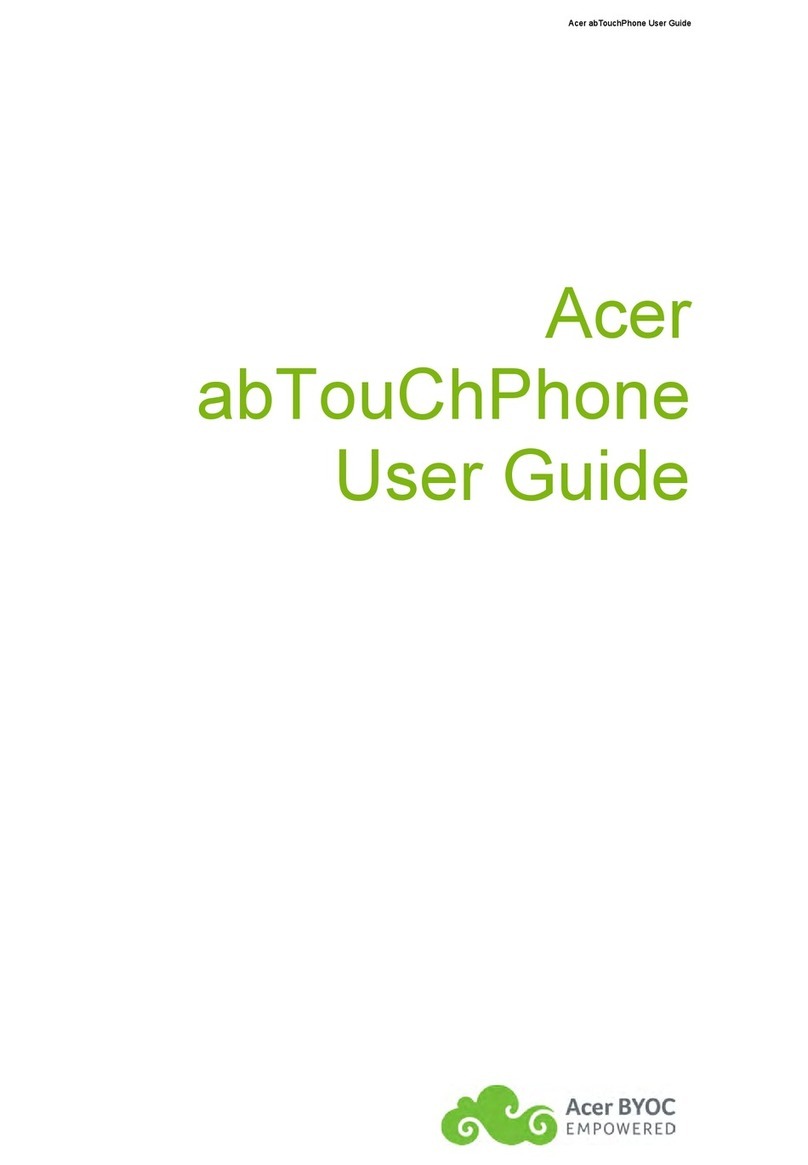Tone Commander 524 User manual

524
Atte ndant’ s Guide


Introduction . . . . . . . . . . . . . . . . . . . . . . . . . . . 1
Buttons and Indicators . . . . . . . . . . . . . . . . . . . 2
524 Console . . . . . . . . . . . . . . . . . . . . . 2
Line Buttons . . . . . . . . . . . . . . . . . . . . . 3
DSS (Direct Station Select) Buttons . . . . . . . . . 3
Indicator Light Flash Rates . . . . . . . . . . . . . . 4
Call Processing Buttons . . . . . . . . . . . . . . . 5
Console Ringing . . . . . . . . . . . . . . . . . . . 6
Incoming Call Indications . . . . . . . . . . . . . . . 6
Operation . . . . . . . . . . . . . . . . . . . . . . . . . . . . 8
Call Answering . . . . . . . . . . . . . . . . . . . . . . . 8
Transferring Calls . . . . . . . . . . . . . . . . . . . . . 9
Call Hold . . . . . . . . . . . . . . . . . . . . . . . . . . 12
Announcing Calls . . . . . . . . . . . . . . . . . . . . . 13
Message Waiting . . . . . . . . . . . . . . . . . . . . . 13
Call Release . . . . . . . . . . . . . . . . . . . . . . . . 14
Call Originating . . . . . . . . . . . . . . . . . . . . . . 14
Adjusting the Handset Volume . . . . . . . . . . . . . . 15
Adjusting the Ringer Volume . . . . . . . . . . . . . . . 15
Setting The Clock . . . . . . . . . . . . . . . . . . . . . 16
Ring Delays . . . . . . . . . . . . . . . . . . . . . . . . 17
DSS/Autodial Setup . . . . . . . . . . . . . . . . . . . . 19
Name Display Setup . . . . . . . . . . . . . . . . . . . . 21
Using a Headset . . . . . . . . . . . . . . . . . . . . . . 23
Console Care . . . . . . . . . . . . . . . . . . . . . . . . . . 23
Contents
Tone Commander 524 Attendant’s Guide i

FCC Warning
This equipment has been tested and found to comply with
the limits for a Class A digital device, pursuant to Part 15 of
the FCC Rules. These limits are designed to provide
reasonable protection against harmful interference when the
equipment is operated in a commercial environment. This
equipment generates, uses, and can radiate radio frequency
energy and, if not installed and used in accordance with the
instruction manual, may cause harmful interference to radio
communications. Operation of this equipment in a residential
area is likely to cause harmful interference in which case the
user will be required to correct the interference at his own
expense.
ii Tone Commander 524 Attendant’s Guide

The Tone Commander 524 console provides an easy to use
answering position for Centrex or PABX lines. Calls may be put
on hold or transferred from the console. Autodialing, message
waiting light control, and station status display is provided for up
to 24 stations. Your system may have one or two attendant
positions.
The features of the Tone Commander 524 include:
PERSONALIZED
STATION
IDENTIFICATION
– each station may be optionally displayed
with the user’s or department name.
DSS (Direct
Station Select)
– autodials a station’s number with a single
button.
INDICATOR
LIGHTS
– show the status of each line or station by
various flash rates.
RECALL – an unanswered call extended via a DSS
button will recall the console after a
number of rings set by the installer.
HOLD RECALL – calls left on hold longer than the time
selected by the installer will recall the
attendant.
AUTOMATIC
HOLD
– the previous call is automatically placed on
hold when the ANSWER button or another
line button is pressed.
RING DELAY – the attendant can program the console to
begin ringing after the line or station has
rung from 1 to 9 times.
Buttons and indicators on the 524 console are described on the
following pages.
Introduction
Tone Commander 524 Attendant’s Guide 1

Buttons and Indicators
524 Console
DIAL PAD
used for dialing
and accessing
system features.
DISPLAY
a 20 character display gives the attendant
diverse information during operation of the
console, including a ringing station’s number
or user name. A time of day clock is displayed
when the console is idle. (see page 6)
CALL
PROCESSING
BUTTONS
(see page 5)
VOLUME
BUTTONS
adjust the
volume of
the console’s
ringer and
handset
receiver.
(see page 15)
LINE BUTTONS
select individual telephone lines for
calling or answering, and access
special features of your system such
as paging.
(see page 3)
DSS BUTTONS
(see page 3)
2 Tone Commander 524 Attendant’s Guide

Line Buttons
Line buttons connect telephone lines to the handset, for incoming
or outgoing calls. Some special features of your telephone system
such as paging are accessed via line buttons.
DSS (Direct Station Select) Buttons
DSS buttons originate and transfer calls to stations.
Spare DSS buttons may be used for autodialing (speed dialing)
frequently-dialed numbers.
HOLD LIGHTS
winking – line is on hold
flashing – line that has
been on hold for too long
is ringing at the console
LINE STATUS LIGHTS
off – line is idle, or special feature
is inactive
slow blinking – line is ringing,
but not yet at the console
(delayed ringing)
flashing – line is ringing at the
console, or special feature is
active
flickering – line is currently in
use at the console (I-Use line).
on steady – line is in use at
another console, or special
feature is active
STATION STATUS LIGHTS
off – station is idle
slow blinking – call is ringing at the
station, but not at the console
(delayed ringing)
flashing – call is ringing at both the
station and the console
on steady – station is busy; also
indicates a waiting message after
the MESSAGE button has been
pressed
flickering – station has been
selected for DSS dialing
Tone Commander 524 Attendant’s Guide 3

Indicator Light Flash Rates
50% on, 50% off; slow rate
50% on, 50% off; fast rate
50% on, 50% off; very fast rate
mostly off, with brief on flashes
mostly on, with brief off flashes; fast rate
mostly on, with brief off flashes; slow rate
flashing
fast flashing
flickering
slow blinking
winking
slow winking
= light on = light off
3 seconds
4 Tone Commander 524 Attendant’s Guide

Call Processing Buttons
RELEASE
disconnects
the attendant
from a call
RING DELAY
programs or
reads ring
delay values
for lines and
stations
ANSWER
answers the
ringing call
(line or
station) that
is shown in
the display
TRANSFER
used to
manually
transfer calls
or cancel a
DSS selection
HOLD
puts the
selected line
on hold
PICK UP
answers ringing
station calls not
shown in the
display (used
with DSS)
MESSAGE
turns station
message
waiting lights
on or off
(optional)
Tone Commander 524 Attendant’s Guide 5

Console Ringing
Lines
1 or 2 warble tones every 4 seconds indicates a ringing
incoming call on any line.
Incoming call ringing rate is determined by the source of the call, and
depends upon the type of telephone system the 524 console is
connected to. Consult with the installer for your system’s ringing rates.
Stations
1 (or 3) steady tones every 4 seconds indicates unanswered
station ringing or recall.
The number of tones heard during ringing station calls is selectable
by the installer.
Incoming Call Indications
Ringing calls are queued for answering in the order received.
The display will show the source of the oldest ringing call. The
number of additional calls waiting to be answered is shown on the
right side of the display.
When a line is accessed and another line rings, the ringing tone is
shortened. This feature allows attendants to process calls with less
background ringing at the console.
RNG LIZ BARRETT 3
an unanswered call ringing at a station,
with three additional ringing calls
6 Tone Commander 524 Attendant’s Guide

The abbreviation for the type of call will be followed by a name if
the line or station has been programmed with a name display.
Otherwise, the line or station number will be displayed.
INC line # or name
incoming attendant call
RNG station # or name
unanswered station call
RCL station # or name
unanswered station call previously
transferred by the attendant
HLD line # or name
call that has been left on hold too long
Tone Commander 524 Attendant’s Guide 7

Call Answering
The source of the oldest call waiting to be answered is shown in
the display – see page 6.
To answer the call shown in the display:
aPress the ANSWER button.
To answer a ringing line not shown in the display:
aPress the line button for the ringing line.
To answer (pick up) a ringing station call not shown in
the display:
aPress PICK UP.
aPress the DSS button for the ringing station.
Operation
8 Tone Commander 524 Attendant’s Guide

After answering, you may:
•transfer the call to a station
•transfer the call to a voice mail system
•put on the call hold
•announce the call over a paging system
•turn on a message waiting light at the station
•release (disconnect/hang up) the call
Transferring Calls
Calls may be transferred by several methods.
When a call is screened, the caller is put on hold while you speak
privately with the called party and ask them if they will accept the
call. You can then return to the caller, transfer the call, or
terminate the call.
Unscreened calls are transferred without any screening of the
called party.
Stations may be dialed by pressing the appropriate DSS button,
or manually with the dial pad if the you have no DSS button
programmed for the desired station.
The various call transfer procedures differ slightly, and are
described below.
Tone Commander 524 Attendant’s Guide 9

To transfer a call to a station
(unscreened by the attendant):
aPress the DSS button for the desired station.
One of the following three displays will be
shown:
aWait until ringback is heard.
aPress the RELEASE button to transfer the call.
If the wrong station was dialed, press the
TRANSFER button, wait to be reconnected to
the calling party, then press the TRANSFER
button again to disconnect the called station.
Dialing is automatically canceled. You will
remain connected to the caller.
DIL JIM HUTCHINS
– ready to dial an idle station
or
BUSY
– station is busy, dialing not allowed
10 Tone Commander 524 Attendant’s Guide

To transfer a call to a station
(screened by the attendant):
aPress the DSS button for the desired station.
One of the following three displays will be
shown:
aWait for the called party to answer, then ask
them if they will accept the transferred call.
aIf yes, press the RELEASE button. The calling
party will be connected to the called party.
If no, press the TRANSFER button, wait to be
reconnected to the calling party, then press
the TRANSFER button again to disconnect
the called station.
The call may now be released, put on hold, or
transferred to another station.
Dialing is automatically canceled. You will
remain connected to the caller.
DIL MARY OAKLAND
– ready to dial an idle station
BUSY
– station is busy, dialing not allowed
Tone Commander 524 Attendant’s Guide 11

To transfer a call manually, using the dial pad:
aPress the TRANSFER button, then wait for
dial tone.
aDial the station number.
aWait for the called party to answer, then ask
them if they will accept the transferred call.
aIf yes, press the RELEASE button.
If no, press the TRANSFER button, wait to be
reconnected to the calling party, then press
the TRANSFER button again to disconnect
the called station.
Call Hold
To place a call on hold:
aPress the HOLD button.
Answer or place another call. The first call is
automatically placed on hold.
Calls that are on hold longer than a preset time will ring at the
console.
or
or
12 Tone Commander 524 Attendant’s Guide

Announcing Calls
To announce a call over an in-house paging system:
aPress the PAGE button. The outside line is
put on hold.
aAnnounce the call.
aPress the RELEASE button to disconnect
from the page. The outside line will remain on
hold.
Message Waiting (optional)
To set or reset message waiting lights:
aPress the MESSAGE button.
“MESSAGE” and the current time will be
displayed. The station status lights will show
the current message waiting status for all
stations.
aTo change the on/off state of any console
message waiting light, press the associated
DSS button. If the station is equipped with a
message light, it will be in the same state as
the console message light.
aPress the MESSAGE button to return to
normal console operation (the console will
automatically exit five seconds after the last
keypress).
PAGE 3:18
MESSAGE 10:47
Tone Commander 524 Attendant’s Guide 13

Call Release
To release (disconnect, or hang up) a call:
aPress the RELEASE button.
Call Originating
To place an outside call:
aPress an idle line button.
aDial the number with the dial pad.
Press an autodial button (a spare DSS button
that has been programmed with the desired
number).
To call a station:
aPress the DSS button for the desired station.
Press an idle line button, then dial the station
number with the dial pad.
Placing the handset on its cradle will not release a line.
or
or
14 Tone Commander 524 Attendant’s Guide

Adjusting the Handset Volume
To adjust the receive volume of the handset or headset:
aWhile connected to a call, press the VOLlor
VOLkbutton.
Volume is reset to the default setting after
each call.
Adjusting the Ringer Volume
To adjust the volume of the console ringer:
aWhile not connected to a call, press the
VOLlor VOLkbutton.
The console will beep with the new ringer
volume setting, and the display will show the
relative volume level.
VOL k
kk
k
VOL l
ll
l
VOL k
kk
k
VOL l
ll
l
{{{}___ VOLUME
Tone Commander 524 Attendant’s Guide 15

Setting the Clock
aWhen the console is idle, press the HOLD
button, then the TRANSFER button, then the
RELEASE button, then T(8) on the dial pad.
The current time will be displayed.
SET TIME 11:23
aPress RELEASE now if you do not wish to
change the time setting.
aEnter the time in 12-hour format using the dial
pad. The display will show the time entered.
The console has no AM/PM indication.
(Hour values less than 10 must be preceded
by a “0” digit.)
The time set mode will be exited automatically.
16 Tone Commander 524 Attendant’s Guide
Other manuals for 524
1
Table of contents
Other Tone Commander Telephone manuals
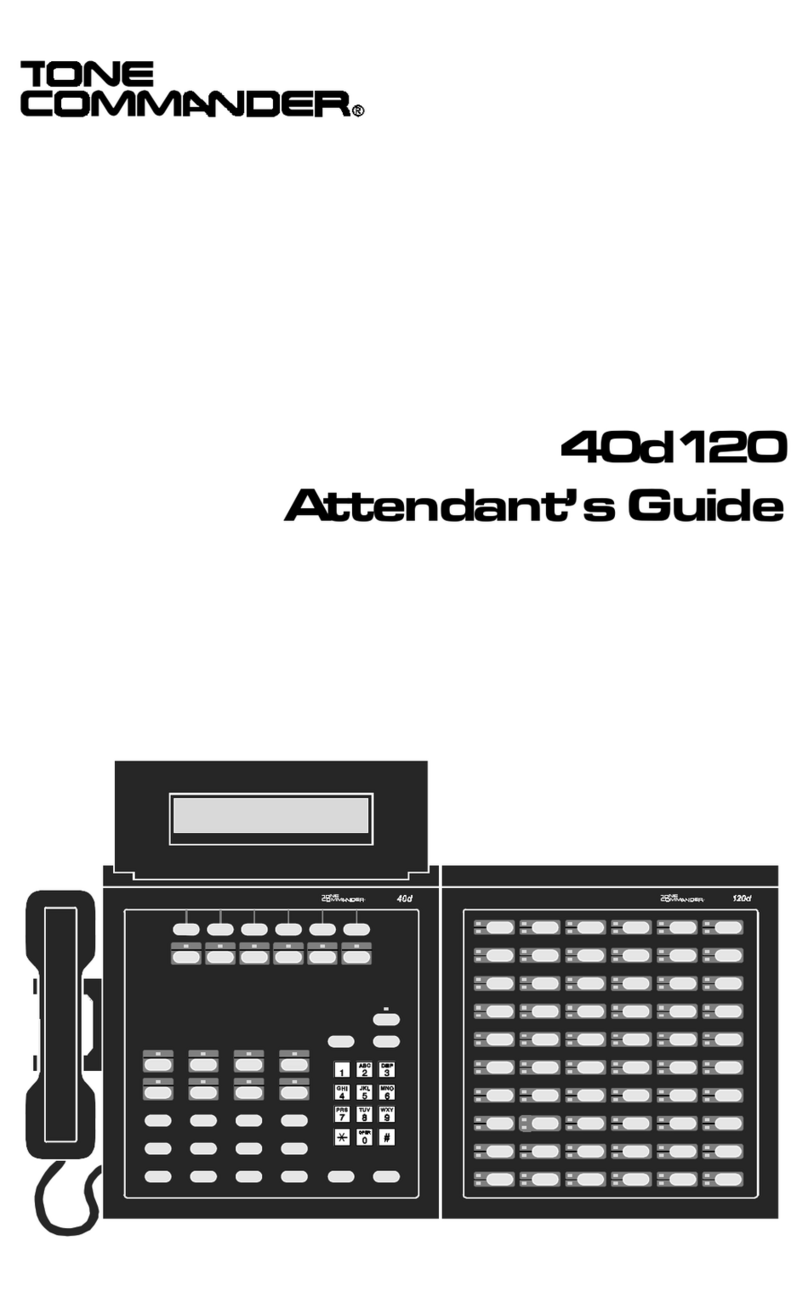
Tone Commander
Tone Commander 40d120 User manual

Tone Commander
Tone Commander 6220T-TSG User manual
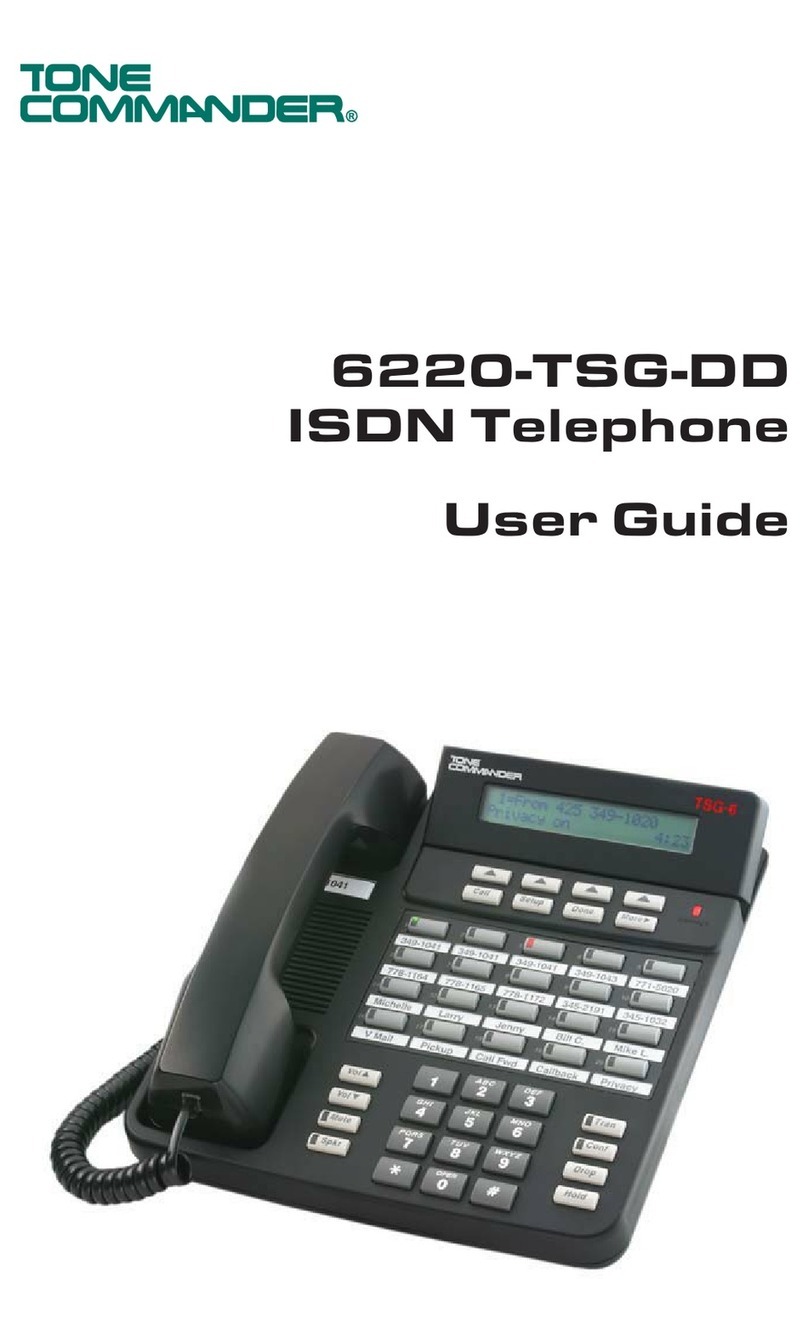
Tone Commander
Tone Commander 6220-TSG-DD User manual
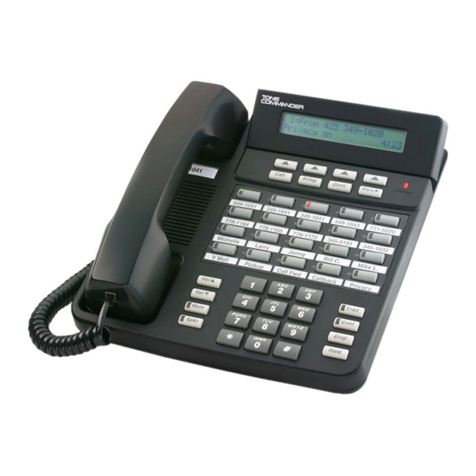
Tone Commander
Tone Commander 6210 User manual

Tone Commander
Tone Commander 1560 User manual
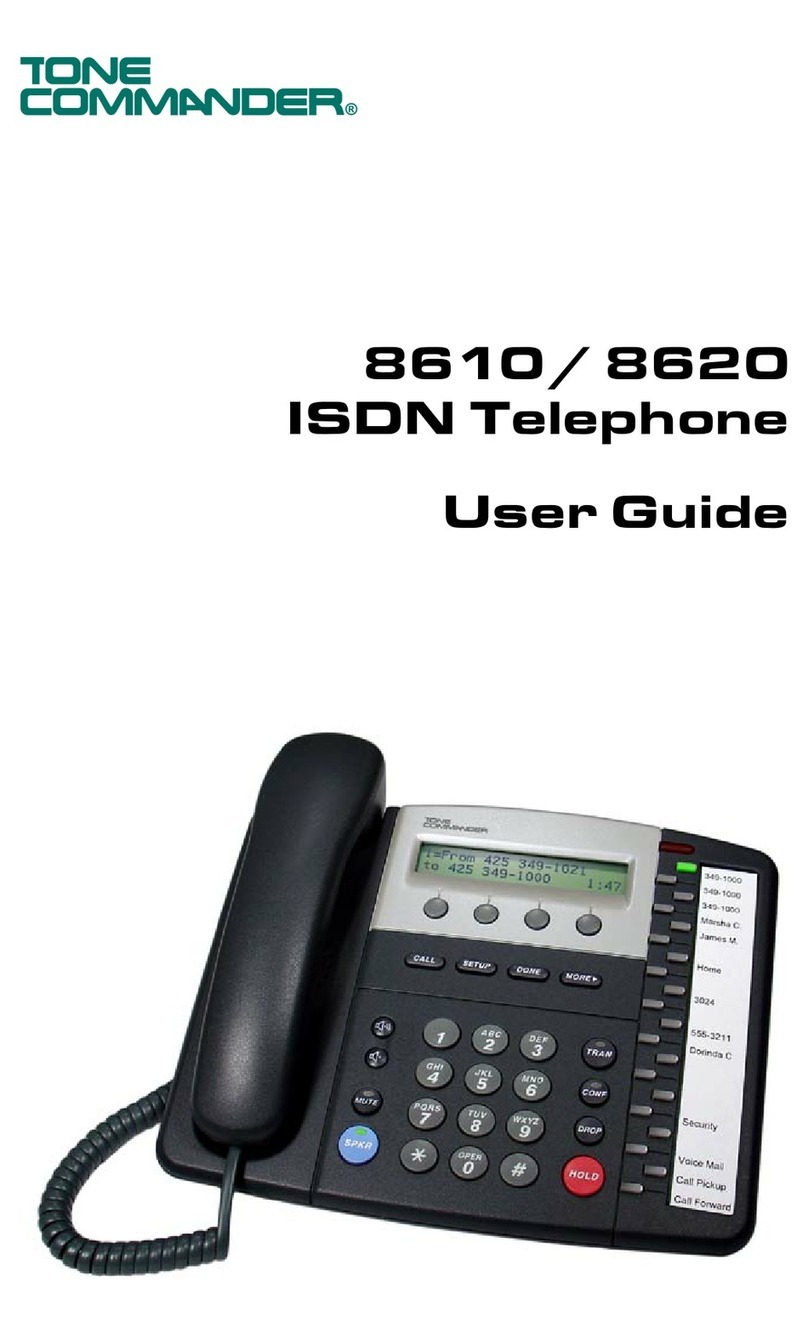
Tone Commander
Tone Commander 8610 User manual

Tone Commander
Tone Commander 2260d User manual
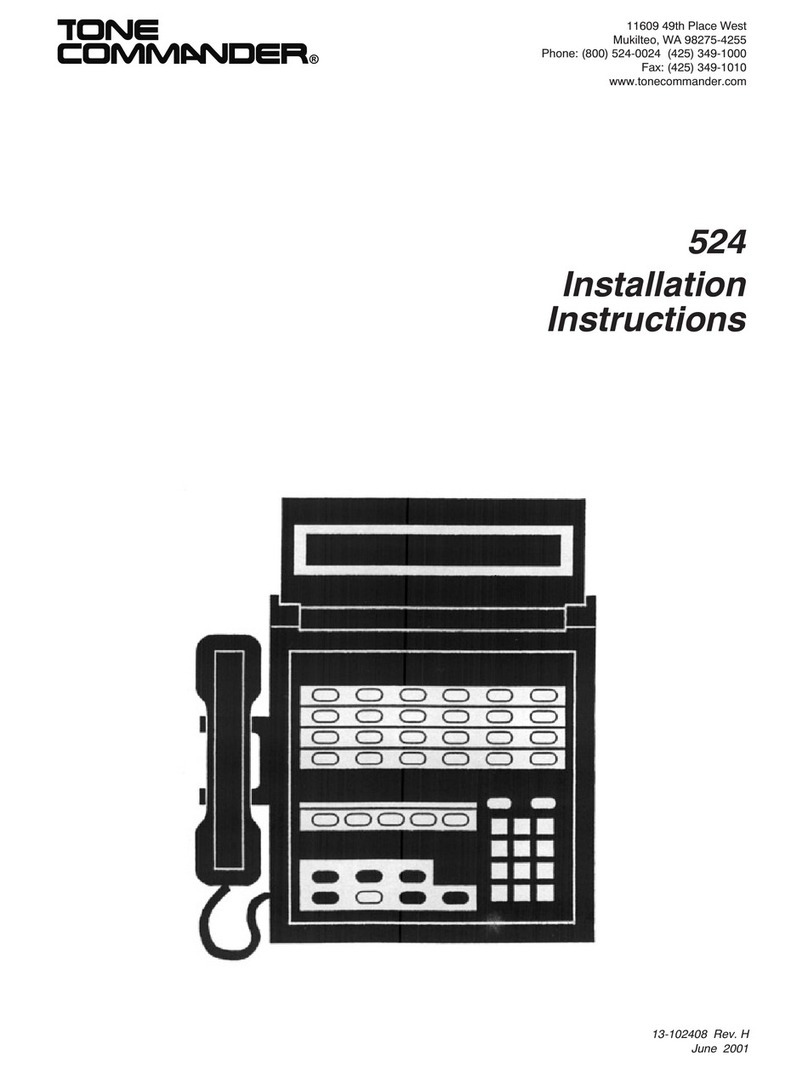
Tone Commander
Tone Commander 524 User manual

Tone Commander
Tone Commander 1030 User manual
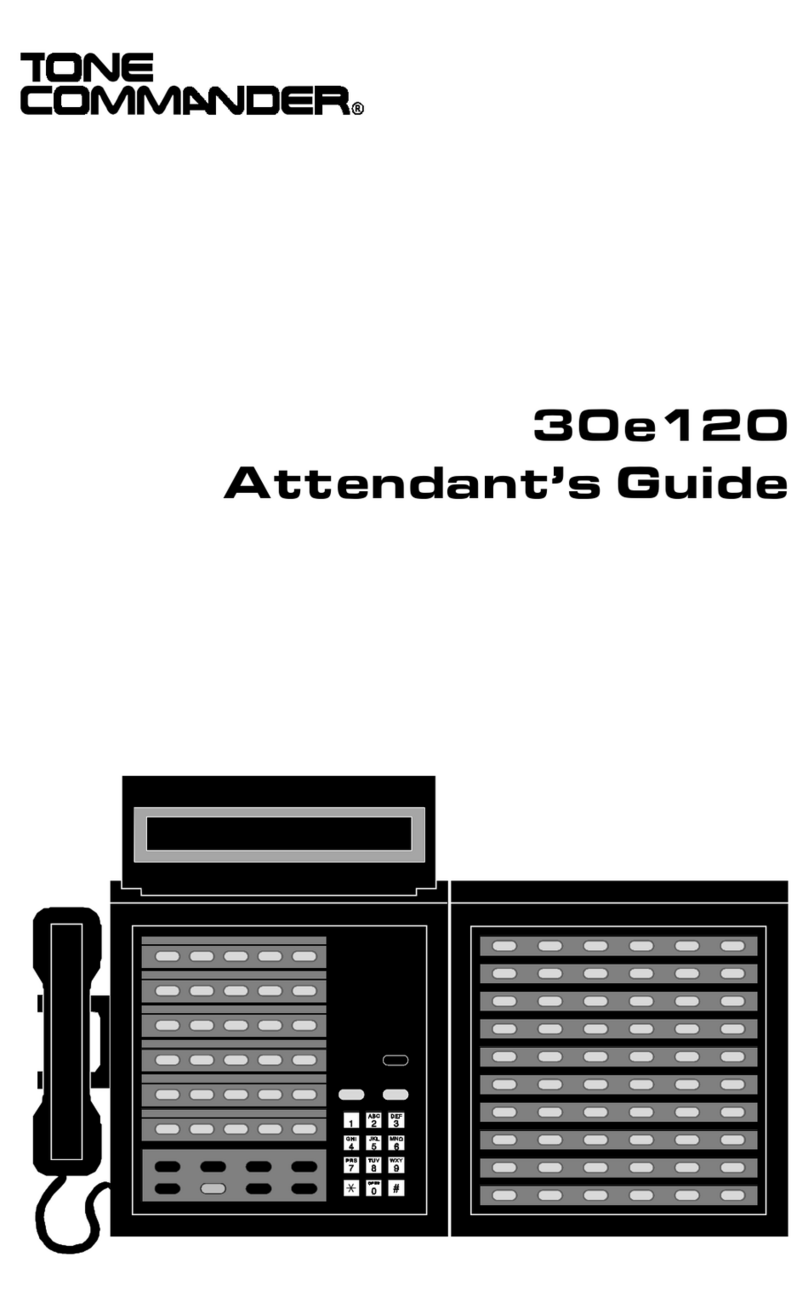
Tone Commander
Tone Commander 30e120 User manual

